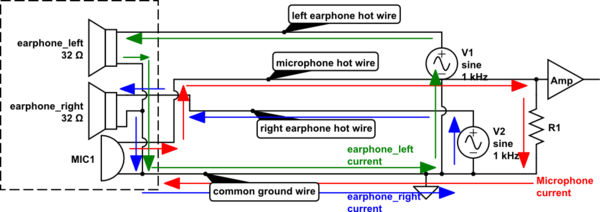An attempt to clear up a misunderstanding - hope it doesn't cause more confusion...
But now I don't understand how it works with the microphone. If the "Microphone" is (+ pole) and "Ground" is still (- pole), where is the signal transported to? Is the microphone signal transported into "Ground" (- pole)? Or the "Microphone" (+ pole), but the current does not flow in that direction.
Perhaps a misunderstanding is that current flows always in loops - complete loops - from a source. In this system, there are three sources: two are at one end of the cable (right & left voltage sources V2, V1) while the third is at the other end of the cable (microphone MIC1). Sources at opposite ends seems to be causing confusion.

simulate this circuit – Schematic created using CircuitLab
With three sources, the common ground line carries three currents, all mingling together and adding/subtracting linearly. The three "hot lines" (microphone, left, right) carry individual currents so that unlike ground, no mingling...the right earphone hot-line only carries current for the right earphone.
Current direction is shown at a particular moment - be aware that direction changes with time, since voltage waveform from each source generates alternating currents.
Perhaps the OP is thinking of power transfer. The microphone MIC1 is a source of power - power flow is always from microphone to R1...current loop direction changes from moment-to-moment along with voltage polarity to ensure that power flows always from MIC1 source to R1 load.
The fact that the common ground carries three currents can be a problem if this wire resistance is too high - in this case, it is possible that the microphone amplifier might see some of the left and right signals. You might see a robust, thick ground wire in an effort to reduce its resistance so that co-mingling signal currents generate very little voltage along its length.
